Bucket Toilets: How to Poop for Less
Last Updated on September 13, 2023 by toilethaven
What is a Bucket Toilet?
A bucket toilet is a dry toilet that consists of a 5-gallon bucket/pail with a lid that serves as a seat. It can either be used as a home toilet or a portable camping toilet. Bucket toilets can also be used as RV toilets.
So, how does a bucket toilet work? That depends on whether the toilet will be used as a camping toilet or a home toilet.
A camping bucket toilet is emptied as regularly as daily. The user is normally not interested in the end product. They merely use it as a means to an end.
Residential bucket toilets take a more composting form. Apart from using it as a sanitation facility, the owner is also interested in the end product.
To keep bucket toilets from smelling, an odor eliminator like poo powder is used to cover the waste after every use. It also helps in waste decomposition. If you don’t have poo powder, kitty litter or sawdust can be used instead.
You can dump/empty a bucket toilet in the compost pile at a park or campground. Since bucket toilets are used with compostable bags, you can also dig a hole in the ground and bury the waste.
To easily convert a 5-gallon bucket to a toilet, insert two ordinary garbage bags in the bucket, then cover it with an air-tight toilet seat, which is easily available for under $20. Use kitty litter or even sawdust to prevent the bucket toilet from smelling.
Bucket toilets pose health risks to both the user and the collector and may cause diseases if misused. The smell can also be a public nuisance. When used correctly, bucket toilets are safe, practical, and budget-friendly.
Bucket Toilets vs. Composting Toilets
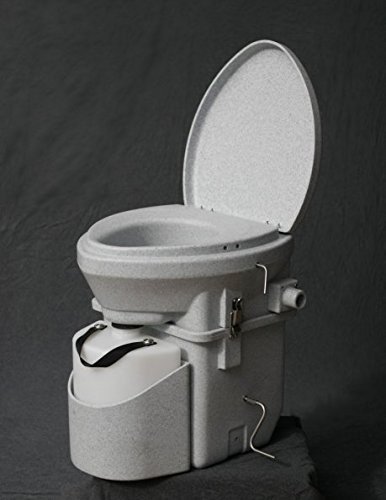
A composting toilet is a dry/non-flush toilet that biologically breaks down human waste and converts it to dry compost matter.
The significant difference between bucket toilets and composting toilets is that composting toilets can separate solid waste (feces and toilet paper) from liquid waste (urine). In contrast, in bucket toilets, both wastes end up in the bucket.
Urine is emptied daily, while the solid waste is left in a bin longer to decompose. Peat moss, sawdust, or coconut coir is added to the solids bin to deal with the smell and speed up decomposition.
The main reason for separating liquid waste from solid waste is that urine piles up faster than poop and tends to smell more. Solid waste should also be kept as dry as possible for proper decomposition to take place.
Composting toilets are, however, very expensive, and that is why bucket toilets are a good alternative. If you would like to have a look at some of the best composting toilets in the market, check out this post I wrote a while ago.
Portable Camping Bucket Toilets
While you are out camping, you want to have a toilet that is easily portable and as affordable as possible. Nothing comes closer than a bucket toilet.
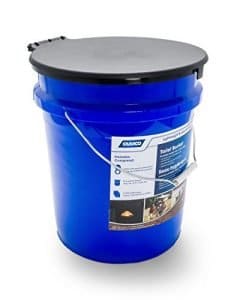
Apart from the toilet, you should buy replacement compostable bags, poo powder, and a privacy tent. A privacy tent gives you the confidence to do your business discreetly. You don’t have to put the toilet in the same tent where you sleep.
If you would like a decent tent for your bucket toilet, check out the WolfWise Portable Pop-Up Privacy Shower Tent.
The poo powder is very effective in odor elimination. If you don’t want to keep buying bags and poo powder, you can use ordinary garbage bags and kitty litter. It would be best to double the garbage bags to prevent leaks.
For proper waste handling, ensure the waste bag goes under the seat, not over the seat. When you put it under the seat, its edges will hang outside the bucket, making it easy to empty without having to come into contact with the waste.
To prevent any awful odors, camping bucket toilets should be emptied regularly. Only dump the waste at an appropriate waste disposal location.
Bucket toilet seats are designed in such a way that they snap tightly on the rim of the bucket. Therefore, you are guaranteed that if the bucket falls off, waste will not spill on the floor, something you and I know you wouldn’t want to deal with.
Best Bucket Toilets
If you are looking to buy an already-made toilet either for camping or for residential use, there are two models that I would recommend. These are:
1. Reliance Products Luggable Loo
- The Reliance Luggable Loo is the most economically priced portable toilet by Reliance Products;
- The simple bucket style design and traditional snap-on lid makes this 1 of the top sellers;
- The Luggable Loo is an extremely rugged portable toilet for any outdoor adventure like for hunting, fishing and camping expeditions;
Reliance Products luggable loo is the best and most inexpensive bucket toilet in the market. It is gray and has a metallic handle and a snap-lid toilet seat.
Its maximum weight capacity is 200 pounds, and it comes with a 5-year guarantee. You need to show proof of purchase.
2. Camco Portable Bucket Toilet
- Portable Travel Toilet: This portable camping bucket is designed for camping, RVing, boating, or any other recreational activity; the 5-gallon camping toilet comes with a seat and lid attachment that...
- Sturdy Construction: This bucket toilet is made of durable and lightweight UV-resistant polypropylene
- Easy Handling: Portable toilet features an attached carry handle that ensures easy transport; it comes with 3 bag liners
The Camco portable camping toilet is also another fantastic bucket toilet. It works just like the Reliance luggable loo but is a little pricier.
It is bright blue, which is probably why I ranked it second. Blue is too blight for a bucket toilet, and blue is primarily used for portable water containers. Its maximum weight capacity is 300 pounds.
Best Bucket Toilet Seat
If you already have a 5-gallon bucket, you can choose to buy a seat only, not the whole toilet. However, you can only buy a bucket toilet seat, not any other one. Regular toilet seats, even round toilet seats, cannot fit in bucket toilets.
Surprisingly, most bucket toilet seats cost as much or even more than bucket toilets. I honestly don’t understand the logic behind it. If you don’t feel like the seat alone is worth it, you can go ahead and buy a complete toilet.
Another problem with bucket toilet seats is that they don’t always snap on the bucket rim. Some don’t align well with the bucket and keep falling off. The advantage of buying complete bucket toilets is that they are tested, and the seat fits perfectly and snaps on the bucket rim.
A decent bucket toilet seat is the Bodshell Portable bucket toilet seat, which you can buy on Amazon. It is a little pricier than the others, but it does the job.
Bucket Toilets for Residential Use
A bucket toilet is something I recommend people to have in their homes as an emergency toilet. Just take a moment to think what you would do if all of a sudden your home pipes run dry and all you have are flush toilets!
Or better still, if you only have one bathroom which you need to remodel. What would you do during such a time? This is where a bucket toilet comes in handy.
Bucket toilets are also a good option for people who live in tiny/remote houses without access to running water and/or sewer lines. They are economical and eco-friendly as they do not need water to function.
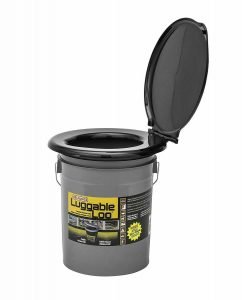
You can either buy a ready-made bucket toilet, or you can make your own. I prefer an already made one since I can return it if it doesn’t work as I had intended and they are also very cheap.
If you already have a 5-gallon bucket, you can go ahead and buy a seat only instead of the whole toilet. I have seen some people wrap a pool noodle around the bucket’s rim and use it as a seat instead.
I, however, prefer an actual seat to a pool noodle. It is easier to clean a seat than a pool noodle, and in case the pool noodle comes into contact with urine, you don’t want to imagine the smell. A snap bucket toilet seat also has a lid to keep the mess covered at all times.
Residential Bucket Toilet Design
Most people’s main concern with bucket toilets is the fear of foul odors. I can confirm to you that a well-designed bucket toilet system should never smell.
There are several things to do to make sure that your bucket toilet does not smell. These are:
1. Use two buckets
You should always have two buckets if you want to eliminate smells from your bucket toilet system. One bucket is for the number 1, and the other one is for the number 2.
A mixture of urine and feces gives such an awful stench, and you should try to separate them as much as possible. Urine should be emptied daily, while feces will be left longer to decompose.
The best thing with urine is that it is sterile, and you can dump it in your garden as soon as you relieve yourself. It is a fantastic fertilizer due to its high nitrogen concentration and will not affect the environment in any way unless you have a health condition. Diluting the urine prior to pouring it into the garden is advised.
Conversely, feces contain millions of microorganisms (good and bad) and shouldn’t be dumped raw. Composting it before dumping is therefore necessary.
2. Use a Carbon-based Medium
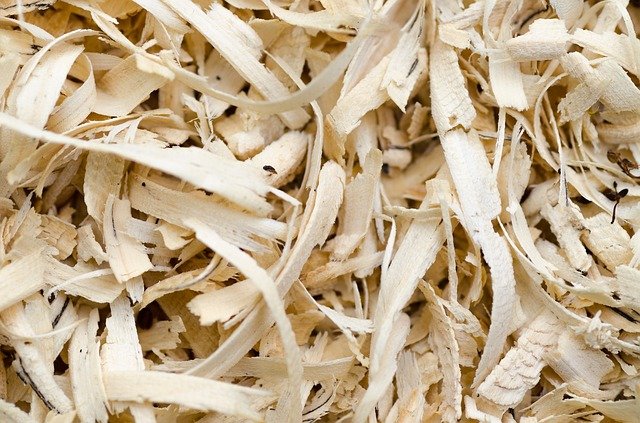
You should cover your waste with a carbon-based medium every time you use a bucket toilet. The medium is effective in odor prevention and also speeds up decomposition. Some of the best mediums to use are:
- Peat moss
- Saw dust
- Wood chip
Apart from preventing odor, these materials cover the waste so that it is not as disgusting to look at. I like to use wood chips or sawdust over other substances, which include topsoil and dried grass.
Peat moss is great, but it is just more expensive than sawdust or wood chips. I especially like the sawdust smell, more so if it is from cedar.
3. Use a Fan
A fan is a fantastic way of preventing odors. Even high-end composting toilets have an integrated fan system. This is also the reason why residential flush toilets are vented.
A fan does not need to be on 24/7. You can have it only for the duration you are doing the job. There is that smell that comes during that time, and just before you cover your waste with sawdust, you should have a fan on.
It is also helpful to ensure that the room where you have the bucket toilet is well-ventilated. Air should be able to flow in and out naturally.
A trick that may prove worthwhile is to leave the bucket outside in an area with a natural flow of air, probably overnight. This should, however, be within your compound, as other people might find it gross.
Another advantage of having a fan, although I discovered it by accident, is privacy. The humming of a fan prevents people outside the bathroom from hearing you push out the logs, which for me, is something I always dread.
Bucket Toilet Disposal
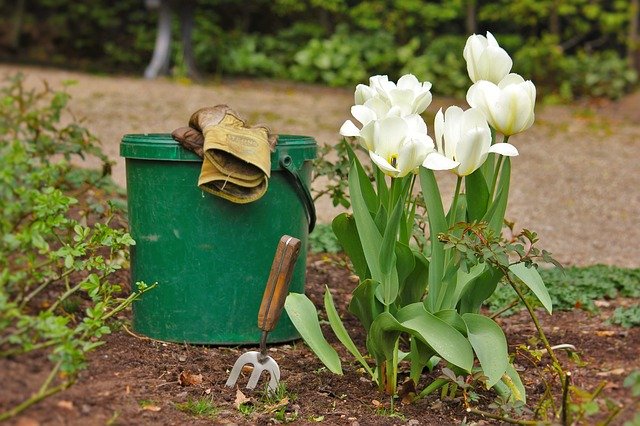
Since decomposition takes quite a long time, you should have a barrel where you empty the contents of your bucket once it is full. The barrel should have a lid that you only empty when dumping waste from the bucket to contain any smell and keep off flies.
Since the waste from the bucket will further decompose in the barrel, you should not use a plastic bag with the bucket toilet. Just use the bucket as it is.
Plastics are non-biodegradable and not something you want to bury in your garden. They would also slow down the decomposition process, not forgetting how difficult it would be to empty the barrel.
To avoid waste sticking at the bottom of the bucket, always pour a good amount of sawdust (about an inch or two) before getting down to business. It would be best to clean the bucket every time after dumping waste in the barrel.
It is important to make sure that only biodegradable waste goes inside the bucket. Do not, therefore, substitute toilet paper with wet wipes. Baby diapers, sanitary pads, condoms, and other products should be disposed of separately.
Since by the time you are emptying the waste into the barrel, there is still some moisture; it helps to have holes at the bottom of the barrel. Use a 3/16-inch bit to drill the holes or even a hot nail.
You will then need to bury the barrel up to the ¼ quarter mark to help the leachate safely pass to the ground. Use a cover that allows natural air circulation in the barrel but also prevents rainwater from entering.
Once the barrel is full, it takes about nine months for complete decomposition and all pathogens to die off. You should, therefore, have several of these barrels to alternate.
A bucket toilet is a very simple but sustainable alternative to flush toilets. It saves the water bills and is also eco-friendly.
FAQS
1. Can I poop in a bucket toilet?
Yes. It is hardly a toilet if you can’t poop in it. You should, however, empty it as often as possible to avoid odors, especially if you are using it for both the number 1 and the number 2. Kitty litter, sawdust, or peat moss will help to prevent odors.
2. How much cat litter should I put in a bucket toilet?
Just enough to prevent the smell and cover the waste completely. You do not want to look at your mess the next time you use the toilet. About half a cup should suffice.
3. How do you attach a 5-gallon bucket to a toilet seat?
First, make sure that the toilet seat is designed for a bucket toilet and not a flush toilet. Put the plastic bag inside the bucket and fold its edges around the rim of the bucket. Attach the snap bucket seat the same way you would attach a bucket lid.
4. How do you prevent a bucket toilet from smelling?
Use a carbon-based medium like peat moss/sawdust/kitty litter every time you use the toilet. Keep the lid down at all times when the toilet is not in use. Have an extractor fan if possible.
5. Where should you empty a bucket toilet?
Most camping sites have designated waste disposal areas. This is where you should empty your bucket toilet. If you use a bucket toilet at home, dump the waste into a big barrel for decomposition and afterward in your garden.

